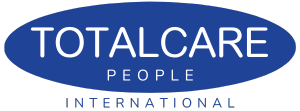
MIA vs. AWOL: Understanding Absenteeism in the Workplace
MIA vs. AWOL: Understanding Absenteeism in the Workplace
When it comes to managing attendance in the workplace, the terms “MIA” (Missing In Action) and “AWOL” (Absent Without Leave) often come up. Although both describe types of absenteeism, they carry different connotations and implications within a professional setting. Here’s a straightforward guide to understanding these terms and how they can impact the workplace.
1. MIA: Unexpected and Unexplained Absence
- Informal Use: Typically used in casual conversation rather than in formal HR documentation.
- Temporary and Unexplained: MIA suggests a temporary absence that might not have been communicated beforehand. Reasons could range from personal emergencies to miscommunications.
- Impact on Workflow: While generally less formal, being MIA can disrupt team activities and project timelines, creating challenges in coordination.
2. AWOL: A Formal and Serious Issue
- Unauthorized Absence: Indicates that an individual has left their post without permission and without intent to return at the designated time.
- Consequences: Being AWOL is typically viewed as a violation of company policies, and depending on the context, can lead to disciplinary actions including termination.
- Documentation and Policy: Often documented officially in employee records and addressed in organisational policies regarding leave and absence.
Key Differences and Workplace Management
- Severity and Formality: MIA is often seen as less severe and can sometimes be resolved with communication, while AWOL is a clear breach of policy.
- Documentation: MIA might not be formally documented unless it becomes a frequent issue, whereas AWOL will almost always be recorded due to its implications.
- Management Strategies: Handling MIA situations may require check-ins and better communication channels, whereas AWOL situations might need a more structured approach such as disciplinary hearings or legal consultations.
Practical Tips for Employers
- Clear Communication: Ensure all employees understand the definitions and consequences of being MIA or AWOL as per company policy.
- Attendance Policies: Develop clear, fair attendance policies that outline procedures for reporting absences, along with consequences for failure to comply.
- Supportive Environment: Foster an environment where employees feel able to communicate openly about potential absences to prevent instances of MIA or AWOL.
In conclusion, while both MIA and AWOL deal with absence from the workplace, they differ significantly in their formality, implications, and the way they should be managed. Understanding these differences is crucial for maintaining an effective and harmonious workplace. Employers should ensure that their team is aware of the terms and encourage open lines of communication to mitigate unnecessary absenteeism.